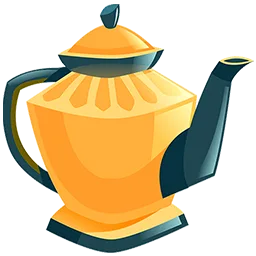The Beauty & Intricacy of Iranian Tea Culture & Tradition
Iran is one of the countries where tea has a dedicated culture and is a social staple among people. When I think of a cup of Iranian tea a clear, aromatic, and dark red colored tea in a small glass comes to mind. For me, this cup of tea is a small window into the cultural, historical, and social world of the great Iran. Iran is my country, and in my country, from the moment a guest enters the house and sits down to start a conversation, until they leave, freshly brewed traditional black tea is there.
In this article, we will discover the origin of Iranian tea culture, special ceremonies related to tea, its role in modern Iranian society, and some popular Iranian teas.
Origin of Iranian Tea Culture
Tea is very famous in Eastern countries as a traditional drink, and everybody knows it, but it really entered Iran in a relatively modern and recent period. According to reports, in the late 19th century, Iranian diplomat Prince Haj Mohammad Kashef Al Saltaneh, who is known as the Father of Iranian Tea, took tea cultivation techniques to Iran from India and established a tea plant in northern Iran for the first time.
Tea was rare in Iran at first, but with successful cultivation in provinces such as Gilan and Mazandaran, it became a national drink. Also, one of the prominent elements of this culture is the samovar, which is a device imported from Russia and used in homes and teahouses, similar to teapots.

Drinking tea changes from a simple habit into a symbol of hospitality. In fact, tea culture in Iran is a combination of history, regional geology, social relations, and global influence that today is one of the small but important pillars of Iranian daily life.
Special Tea Ceremonies in Iran
In Iran, unlike some cultures that have very formal ceremonies, tea serves in a simple and intimate way, but some things add to its cultural appeal. For example, when a guest enters the house, one of the first things to do is offering tea and it is customary to drink tea before talking or starting work.
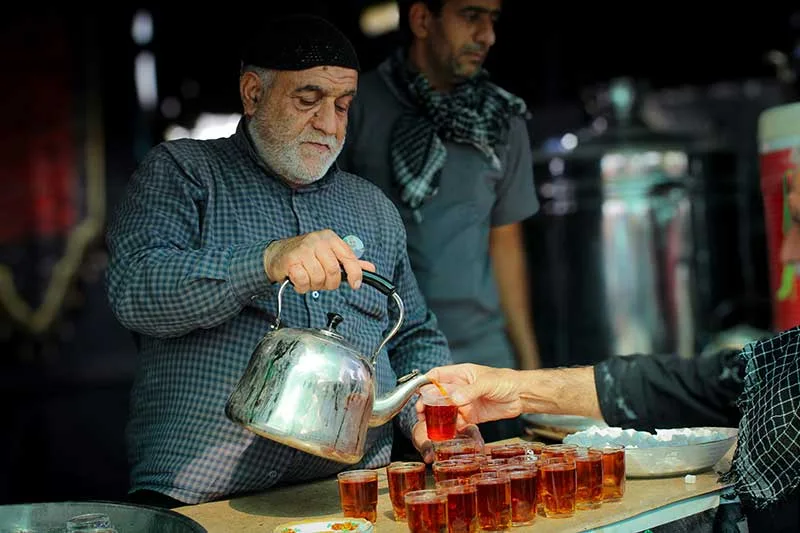
In traditional teahouses, you usually sit on a low bed with a rug and a back, take off your shoes, and enjoy a cup of tea with candy or sugar cubes. What a wonderful position it is!
Another interesting point in some houses is that tea serves in a narrow glass cup and strong tea is in the teapot at first, then diluted with boiled water to taste. This method controls the strength of the tea.
In these spaces, tea is not just for quenching thirst. It is also a place for conversation, relaxation, poetry reading, and socializing. For example, in the famous Azari Tea House in Tehran, there is a picture of traditional art and architecture, and an atmosphere of music and poetry beside drinking tea.
The Role of Tea in Modern Iranian Society
In today’s Iranian world, with the growth of coffeehouses and cafes, the popularity of tea continues to grow and is present in various parts of life. For example, in the workplace, there is often a time for tea drinking, which is also an opportunity to return to peace. Also, in family and friendly gatherings, tea is accompanied by food and it’s not just an after-meal drink.
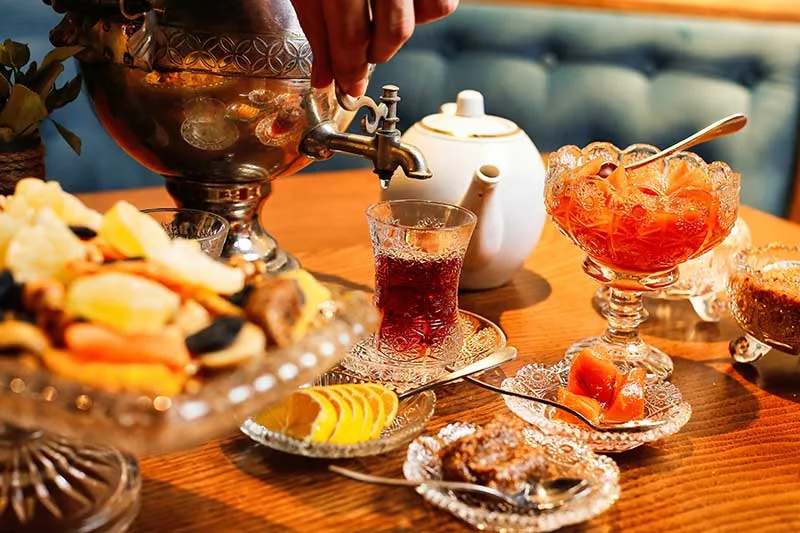
In the Iranian market, there are many domestic tea brands and manufacturers. For example, the Golestan brand offers black, green, and other herbal tea blends.
In addition, traditional teahouses are combined with authentic architecture and a modern atmosphere, and even the tea tourism region in northern Iran is one of the community’s destinations to experience tea culture.
Five Popular Herbal Teas in Iran
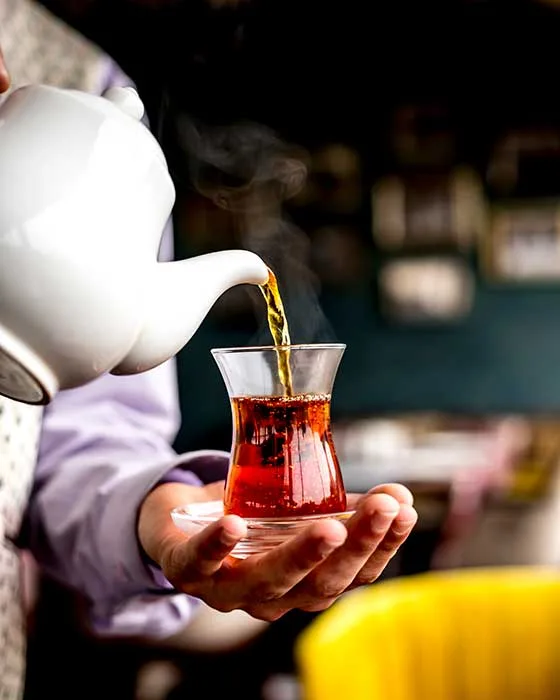
Along with black and green tea, Iran has a very strong tradition of herbal teas, all of which are part of popular culture, traditional medicine, and socializing. Here are five popular teas:
- Saffron Tea: Saffron, also known as the Red Gold or Iranian Red Gold, is used in this tea, which is calming and improves mood.
- Rose Petal Tea: It is made from dried rosehip petals and has a very delicate aroma, and is more special in cities like Kashan, where this flower is commonly produced.
- Borage Tea: Borage herb is native to northern Iran and uses in traditional Iranian medicine to calm and improve mood.
- Thyme Tea: Thyme is a popular medicinal herb and, as a tea, is used to improve digestion, relaxation, and the respiratory system.
- Chamomile Tea: Chamomile is very popular among Iranians due to its calming, hypnotic, and anti-anxiety effects.
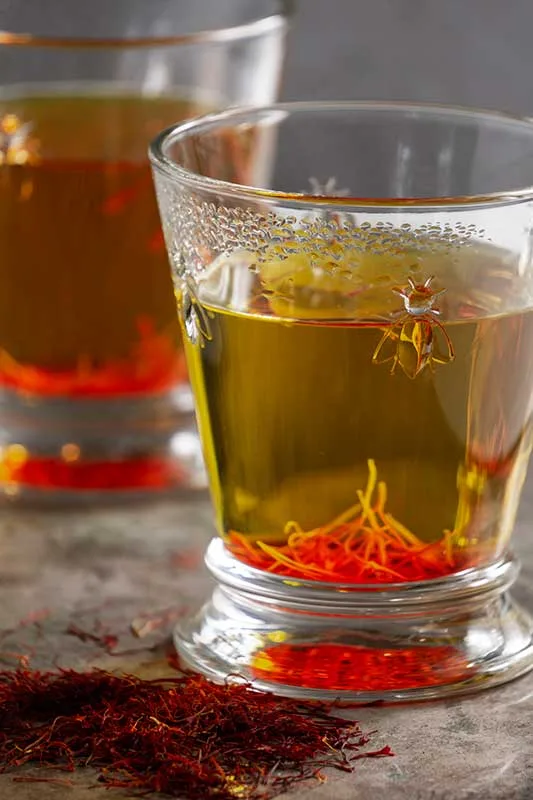
Each of these teas has a place in Iranian culture beyond just drinking. In many homes, especially in the fall and winter, it is a voluntary drink for leisure, conversation, or even a simple remedy for many reasons.
Conclusion
In conclusion, I must say that the tea culture in Iran is very rich, multi-layered, and to some extent unique. It has come a long way from the bringing of tea seedlings by Kashef Al-Saltaneh in the 19th century to today, when tea and teas are an integral part of Iranian life. Tea is present in homes, teahouses, business meetings, friendly meetings, and even cultural tourism, and is a combination of hospitality, relaxation, and conversation.
Also, Iranian herbal teas show that Iranians, in addition to the pleasure of drinking, have paid attention to health, tradition, and local plants. Meanwhile, a cup of tea is not just a beverage for us; it is a moment to connect with ourselves, others, and a long-standing culture. So the next time you grab a cup of tea, you may be drinking more history, culture, and social connection than you realize. I hope this article helps you understand and perhaps encourages you to try at least one of the teas featured.
